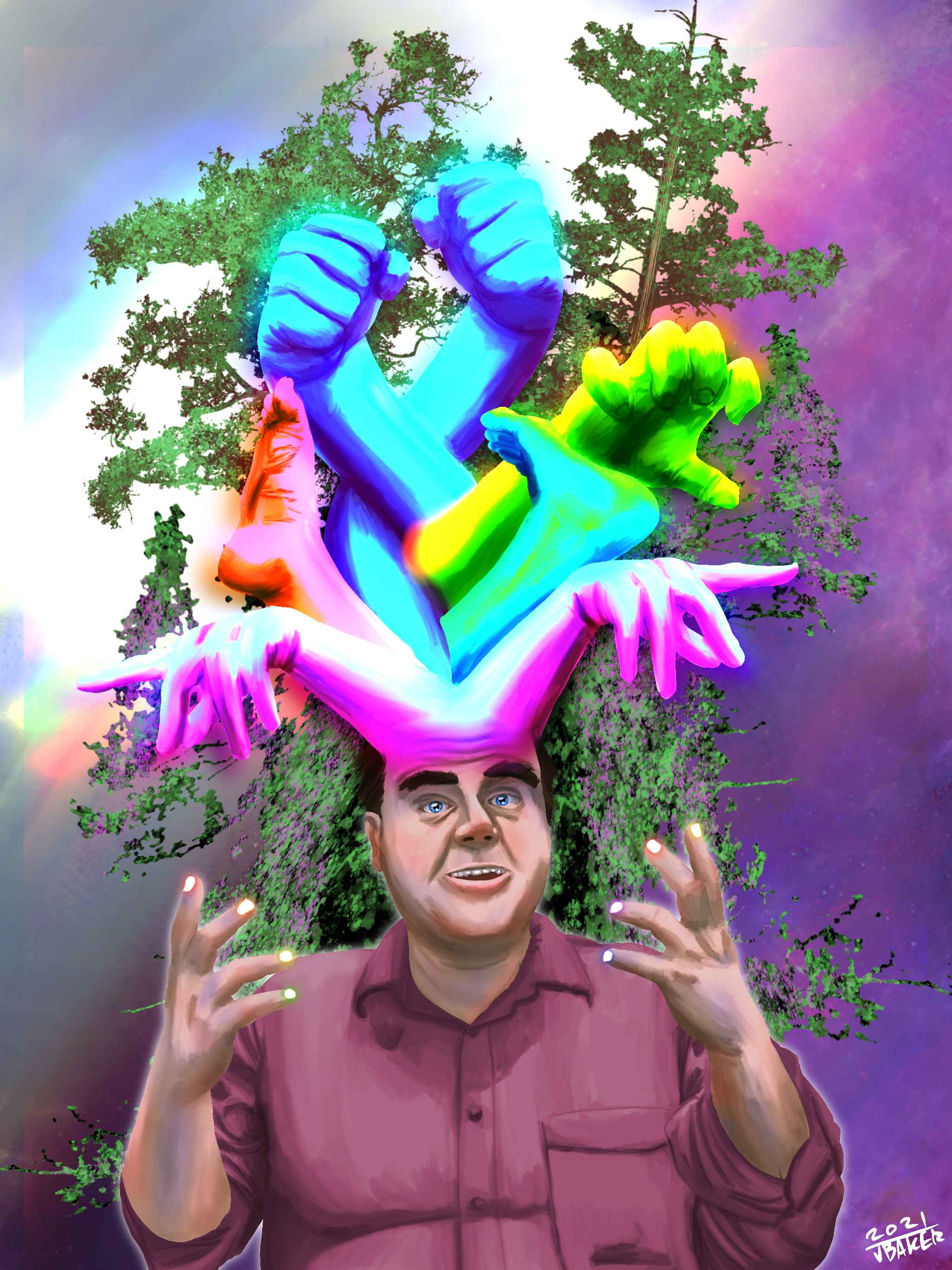Understanding Autism Through Art: Depicting Autistic Traits in Visual Form
“Neurogender” self portrait by Jeff Baker
ID: a mirror image of a nonbinary person has it's colour zapped out of them into a rainbow infinity symbol in the middle of the image, leaving trans flag colours behind.
As an autistic artist, I have found that one of the most effective ways to communicate my experiences is through visual art. I often have trouble describing what I’m feeling in words, or worse, I gaslight myself into doubting any feelings I have are real at all. But I can paint what it feels like, and that painting can evoke emotions in other people. I have painted several self-portraits depicting autistic traits, each piece representing a different aspect of my neurodivergent experience.
One of my most personal pieces is called "An Auti's Tics". In this painting, I depict what my facial tics look like on the surface versus what they feel like on the inside. Another piece, "Info Dump", is a comedic take on the autistic tendency to share information in great detail, sometimes to the point of overwhelming others. "Behind the Mask" depicts the impact of masking, which is the process of hiding one's autistic traits in order to appear more neurotypical. "Stimming" portrays the sensation of stimming, which is the repetition of physical movements or sounds that can help regulate sensory input. Finally, "Neurogender" represents my experience as an autistic non-binary person.
“Info Dumping” Self portrait by Jeff Baker
ID: The disembodied head of the artist floats over a trench and spews a tidal wave from their mouth as a mother and son run away from it.
I am not alone in my use of visual art as a means of expressing autistic traits. Many other autistic artists use their work to explore and communicate their experiences. Artist and activist Dani Bowman has made images and animations to depict their experience with autism, while autistic artist and writer Erin Human makes comics, infographics, and neurodiversity themed designs.
“Stimming” Self portrait by Jeff Baker
ID: neon glowing hand and feet in contorted positions joyously spring out of the mind of a non binary autistic person as their fingernails glow, depicting the way an autistic's brain feels while stimming.
Through the use of visual art, autistic individuals are able to communicate the complexities of their experiences in a way that is accessible to others. It also allows us to take ownership of our identities and challenge the stereotypes and stigmas that often surround autism.
“Behind the Mask” self portrait by Jeff Baker
ID: an autistic person stands in front of two mirrors wearing a mask of their own face, smoke is seeping out from behind the mask. this painting illustrates autistic masking.
As an artist, I have found that creating these pieces has been a powerful tool for self-expression and understanding. By depicting my experiences in visual form, I have been able to better understand and communicate my own autistic traits. I hope that through sharing my art, I can help others gain a better understanding of autism and neurodivergence in general.





